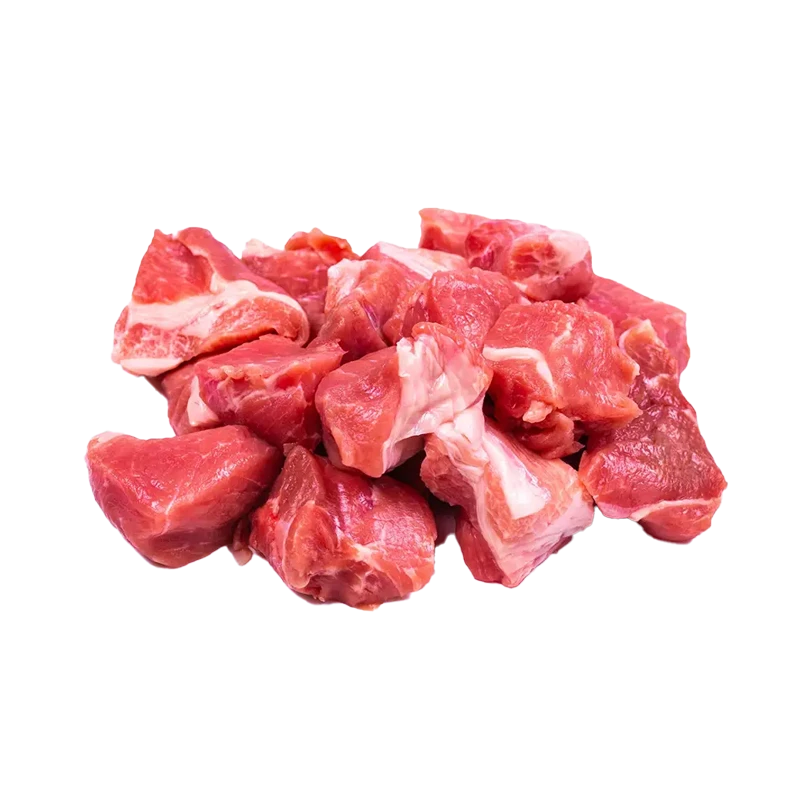Pork — Nutrients, Health Benefits, And Shopping Tips

Written by Listonic Team
Last update on September 6, 2024
Pork nutrients
Nutrition facts
Amount per 100 g
Calories
🔥 242 kcal
| Nutrition per: 100 g | Value | % Daily Value* |
|---|---|---|
| Carbs | 0 g | - |
| Fiber | 0 g | - |
| Sugars | 0 g | - |
| Glycemic Index | 0 | - |
| Protein | 27 g | 54% |
| Sodium | 62 mg | 2.7% |
| Total Fat | 14 g | 17.95% |
*The % of Daily Value (DV) tells you how much a nutrient in a serving of food contributes to a daily diet. 2,000 calories a day is used for general nutrition advice.
27 g
💪 High Protein Content
Pork facts & tips
Health benefits
- High in protein, essential for muscle growth, repair, and overall body function.
- Rich in B vitamins such as B6, B12, thiamine, and niacin, which support energy metabolism and brain health.
- Contains essential minerals such as iron, zinc, and selenium, which support immune function and overall health.
Health risks
- High fat content particularly in certain cuts, which can raise cholesterol levels and increase the risk of heart disease when consumed frequently.
- High sodium content in processed pork products, which can contribute to hypertension and increased cardiovascular risks.
- Risk of contamination with harmful bacteria such as Salmonella or Trichinella, particularly if the pork is not properly cooked to a safe internal temperature.
- Potential for nitrates and nitrites in cured pork products, which have been linked to an increased risk of cancer, particularly colorectal cancer.
How to choose pork
Pork cuts should be pinkish-red in color with firm, white fat and minimal marbling. The meat should spring back when pressed, indicating it is fresh.
Avoid pork that is pale with soft fat or has a sour or ammonia-like smell, as these are indicators that the meat is not fresh. Meat with a slimy texture or that feels tacky should also be avoided, as it may be unsafe to consume.

How to store pork
Raw pork should be stored in the refrigerator, wrapped tightly in plastic wrap or butcher paper. Keep it in the coldest part of the fridge to maintain freshness for up to five days. For longer storage, freezing is recommended.
Leaving pork at room temperature can lead to bacterial growth and spoilage. Avoid storing it near ready-to-eat foods to prevent cross-contamination. Always cook pork within the recommended timeframe and use separate cutting boards for raw and cooked meat.
✅ Extra Tip
How long does it last?
Pork can last for 1-2 days in the refrigerator. For longer storage, pork can be frozen for up to 6-8 months. Proper packaging, such as vacuum-sealing, helps maintain its quality over longer storage periods.
What to do with leftovers?
Leftover pork can be used in a variety of savory dishes. Slice it thinly and add to sandwiches, wraps, or salads for a flavorful protein, or chop it up and mix into a stir-fry with vegetables and rice. Pork is also great when added to tacos, burritos, or enchiladas, where it pairs well with spices, cheese, and fresh salsa.
Use pork in a casserole with potatoes, vegetables, and cheese, or mix it into a soup or stew for added richness and flavor. If you have a lot of pork, consider making a batch of pulled pork sandwiches with barbecue sauce and coleslaw, or using it as a topping for pizzas or flatbreads. Pork can also be added to pasta dishes like carbonara or mixed into a quiche or frittata with eggs and cheese. For a quick snack, reheat the pork and serve it with dipping sauces or on a bed of greens.
👨⚕️️ Medical disclaimer
Discover products from other categories
Listonic Team
Fact-checked
Our editorial team checked this article to make sure it was accurate at the time of publishing it.
Get the top-rated shopping list app on your phone!







